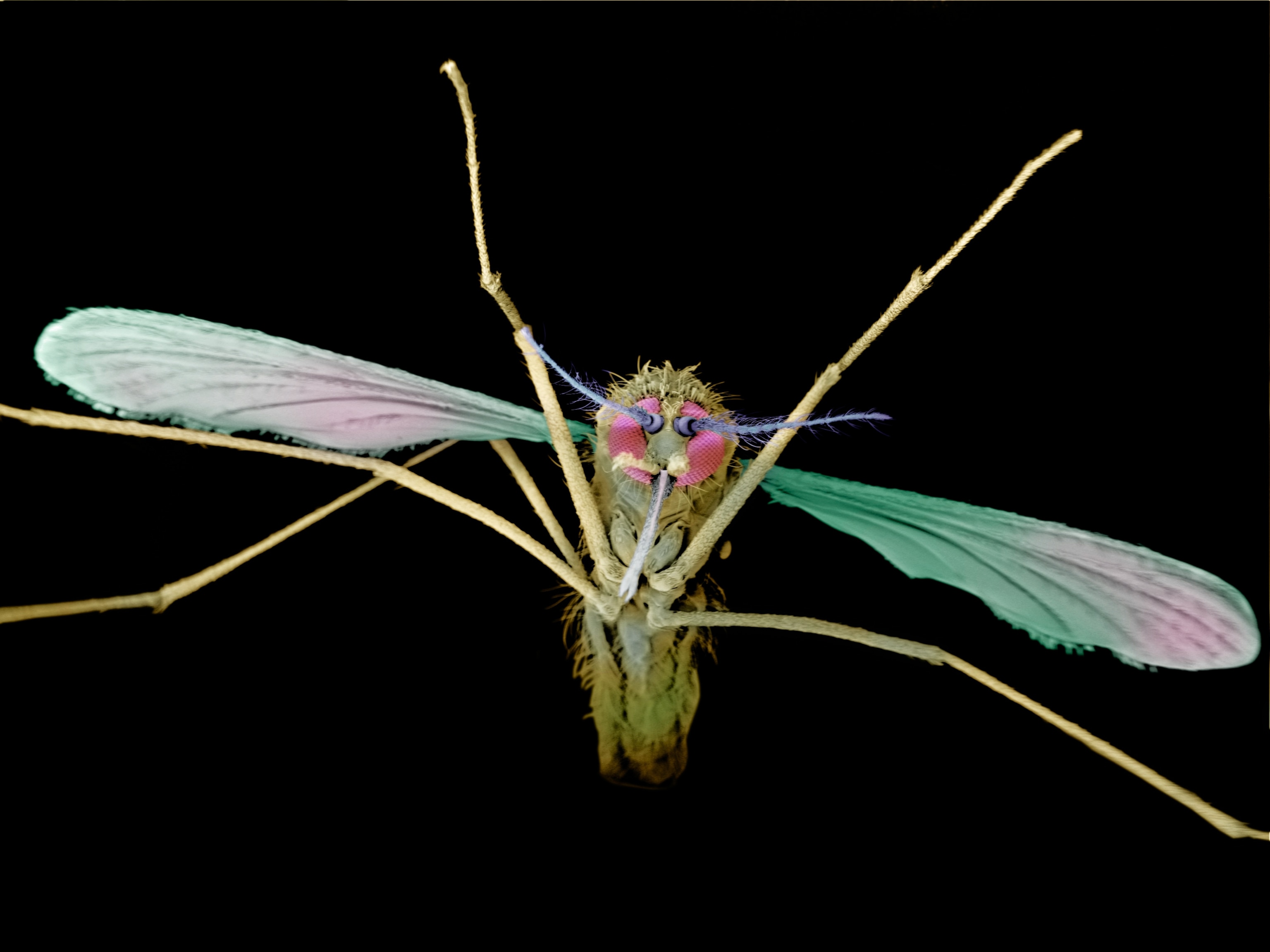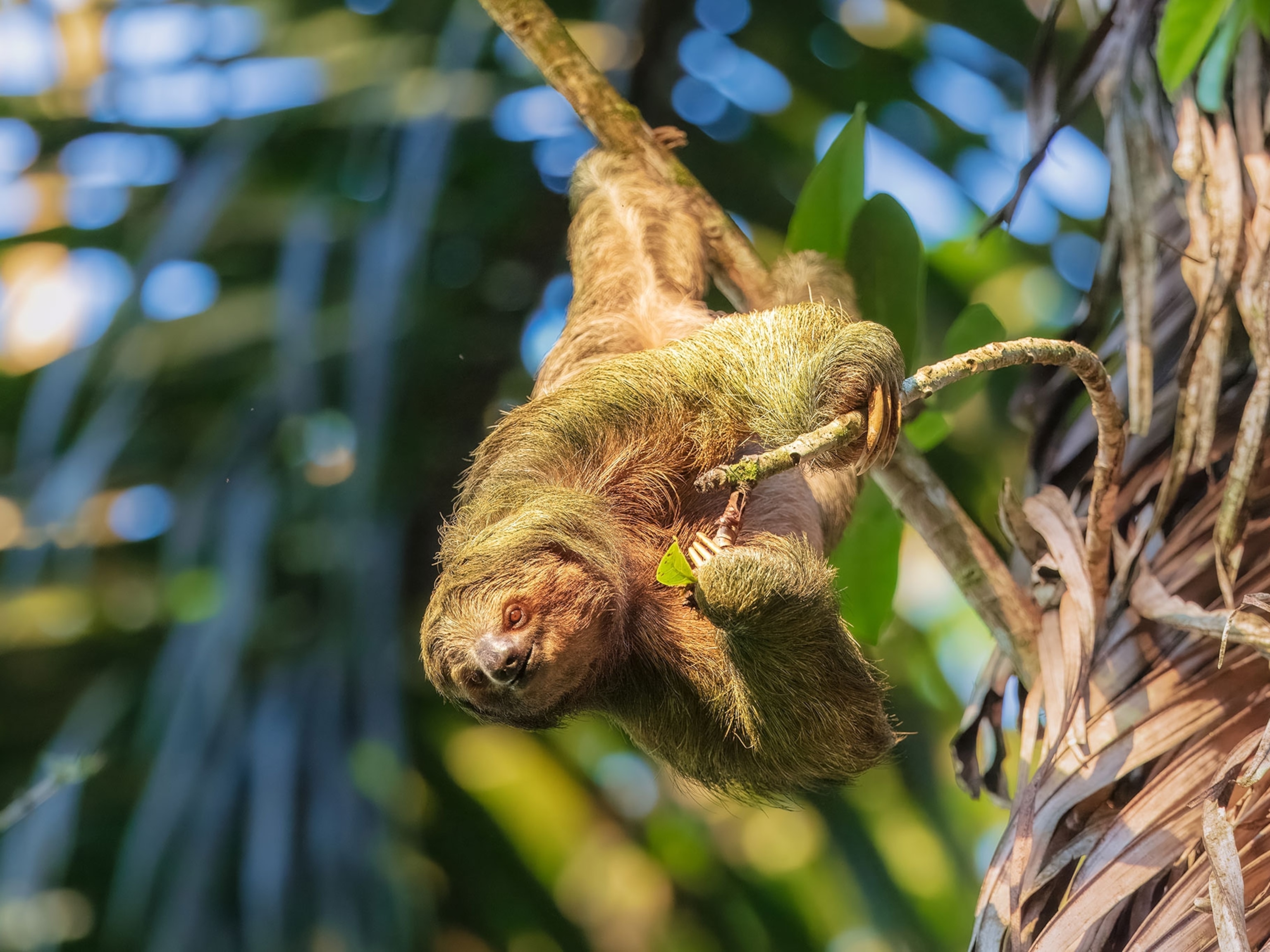Red swamp crayfish—also known as Louisiana crawfish—have a long tradition as a tasty Cajun meal, and they may feel right at home on your plate. But delicious or not, they certainly don’t belong in southern California, or the many other places around the world where they’ve become an invasive species. Now new research shows they may be dangerous for people too, as their occupation of waterways allows mosquitoes to thrive, likely increasing the risk of mosquito-borne diseases.
Red swamp crayfish (Procambarus clarkii) are native to the murky marshes of the southeastern U.S. but have now been introduced to every continent except Australia and Antarctica, instigating ecological turmoil and threatening native species, while also carrying potentially deadly parasites like rat lungworm. (Related: Some crayfish harbor a fungus that is killing off amphibians.)
“It can damage infrastructure like earthen dams by its burrowing,” says Eric Larson, a biologist at the University of Illinois, Urbana-Champaign who was not involved with this study, also noting that the crayfish can muddy normally clear lakes by destroying water plants. “And it often out-competes and displaces native crayfish.” (Related: "Cajun Crayfish Invading Africa, Eating Native Species.")
Gary Bucciarelli—a research scientist at the University of California, Los Angeles, and lead author on the new study—was trapping and removing crayfish in California’s Santa Monica mountains when he and his colleagues made this discovery, published in August in the journal Conservation Biology.
Given the swamp crayfish’s reputation, when Bucciarelli and his team noticed that the streams loaded with crayfish seemed to have higher numbers of mosquito larvae, it caught their attention. “We were finding very few dragonfly nymphs in the crayfish streams as well,” says Bucciarelli, referring to the dragonfly’s juvenile phase, which live in the water and are voracious predators of mosquito larvae.
The team looked at thirteen streams in the Santa Monica Mountains, five of which had either no record of invasive crayfish or had them all removed in recent years. The remaining eight harbored crayfish populations dating back to the 1960s, around the time the southern California invasion started—possibly the result of game fishermen habitually releasing their leftover bait. (See a new "bearded" species of crayfish.)
Sure enough, the scientists found, streams without crayfish had lots of dragonfly nymphs, but few mosquito larvae. The opposite was true where there were crayfish—an abundance of mosquitoes, but hardly any nymphs.
Scared Silly
To figure out how the crayfish might be encouraging mosquitoes, the researchers set up tanks in the lab with different combinations of these three players. When dragonfly nymphs were alone, they gobbled up mosquito larvae, being much more efficient predators than the crayfish. But when they bunked with crayfish, their hunting prowess vanished.
It wasn’t just that the young dragonflies were getting eaten by crayfish—the large, looming crayfish distracted and scared the nymphs, which then stopped even trying to eat mosquitoes.

“The native [dragonfly] species don't know how to adapt to them, and they do maladaptive things,” says Bucciarelli, like hiding or perching in weird locations—like the crayfish’s claws—that put them in harm’s way.
And more mosquitoes means more trouble for people. Of the sixteen species of mosquito in the greater Los Angeles area, only one isn’t a vector for human disease.
Creating a ‘Landscape of Fear’
Just by being there, crayfish thrust the dragonflies into a “landscape of fear” in which the presence of predatory threats twists the behavior of fearful prey. This can have effects that ripple through the ecosystem—for instance, when wolves returned to Yellowstone National Park, newly-vigilant elk changed their foraging patterns, leading unbrowsed plants to grow tall.
For Bucciarelli, the acknowledgement of a potential role of invasive crayfish in public health is fascinating, uncharted territory. Chelsea Wood, a disease ecologist at the University of Washington not involved with this study, agrees.
“I'm really excited to see work like this being done,” Wood says, “because I think for a long time disease research was the province of physicians, and physicians didn't think about what happened outside of the human patient. We are just now discovering all of these really interesting ecological interactions that govern the risk of disease for people.”
It’s similar to what happens when human populations displace predators, allowing populations of small mammals that act as reservoirs for Lyme disease to grow, and along with them, the number of Lyme-infected ticks.
But Wood notes that perturbations in local ecosystems don’t always result in greater disease risk. For instance, in Kenya, work in the 1990s revealed that invasive crayfish are insatiable predators of freshwater snails, which are hosts of the parasite that causes schistosomiasis—a debilitating disease that afflicts over 200 million people worldwide. Where swamp crayfish were intentionally introduced, schistosomiasis declined.
Wood says the research reveals an intriguing pattern that deserves further study, but notes that there may be other unknown factors that influence how crayfish, dragonflies, and mosquitoes are distributed between streams. (Related: An all-female species of crayfish clones itself.)
Invasion Heating Up
Climate change may make this potential public health problem worse, Bucciarelli says. High precipitation years actually “wash out” crayfish from the watershed in flash flood rapids. But as weather patterns shift and the region experiences more drought, these types of purifying events become rarer.
On the mosquito side, at least one species of Culex mosquito found in the region that carries viruses that cause West Nile and encephalitis is expected to expand its range under future climate scenarios. With invasive crayfish boosting their populations, the combination is concerning.
For now, there’s plenty of reason to look closer at this relationship between bottom-feeders and blood-suckers. A crucial step is keeping such aggressive invaders out of native ecosystems in the first place.
“Crayfish are common in the live seafood, biological supply, aquarium, and bait trades,” says Larson. “We really need to take care to prevent the release of these organisms into the environment.”









